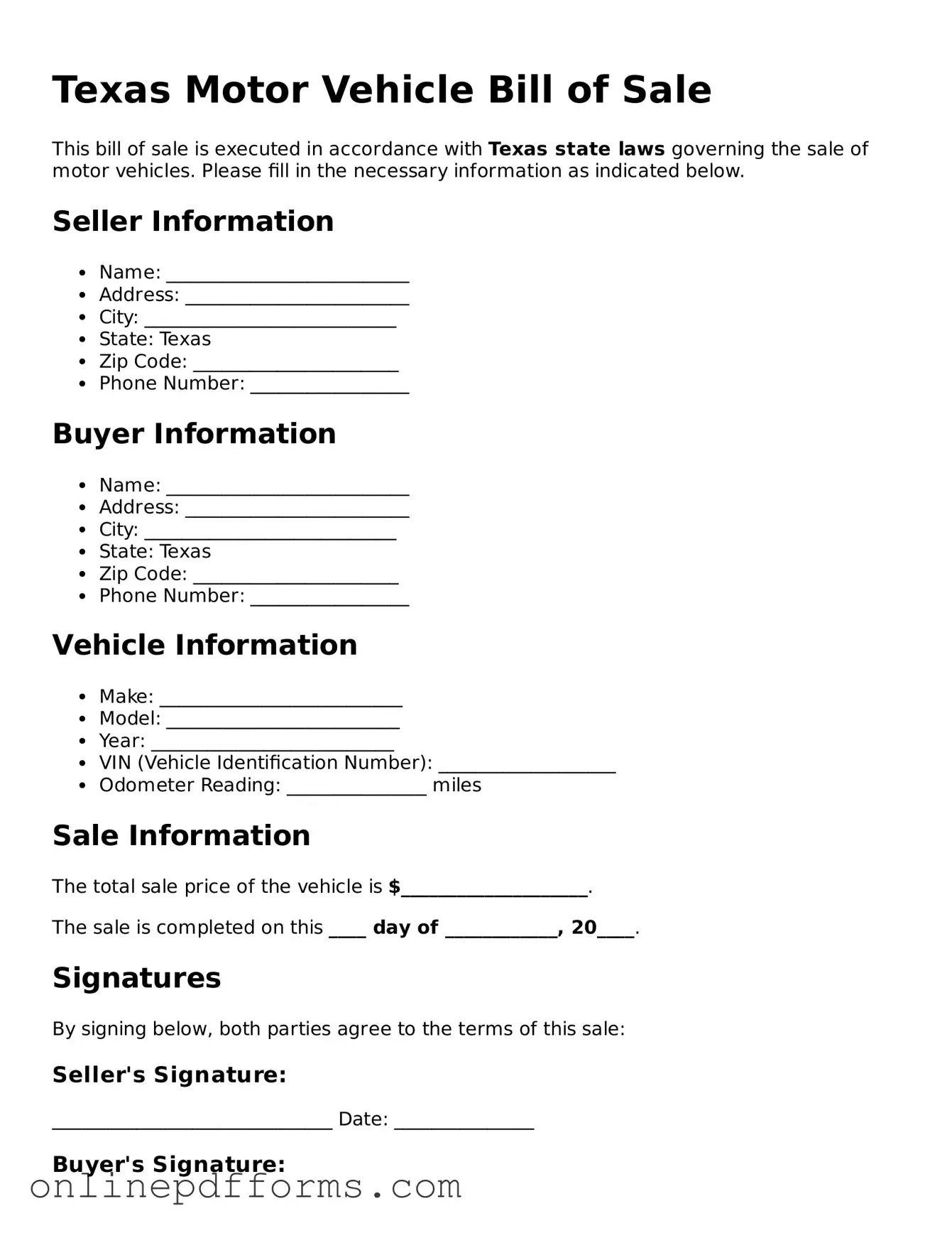Blank Texas Motor Vehicle Bill of Sale Form
The Texas Motor Vehicle Bill of Sale form is a legal document used to transfer ownership of a vehicle from one person to another. This form provides essential details about the vehicle and the transaction, ensuring both parties have a clear record. To get started on your vehicle sale, fill out the form by clicking the button below.
Open Motor Vehicle Bill of Sale Editor Now
